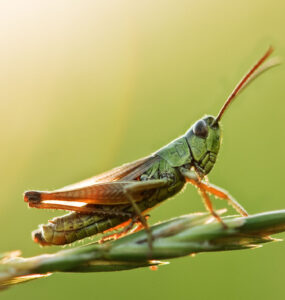Mealy Bugs
by Rob Sproule
Depending on who you ask, this unmistakable critter is either disgusting or fascinating. It looks like something dug up from the Burgess Shale only to escape the Tyrell Museum and find its way to your house plants.
Take a moment to admire them from an evolutionary point of view, then kill them. They’re easy to control in small numbers but, if allowed to establish a population, they can be frustratingly persistent.
In warmer climates, Mealy Bugs are a financial scourge to tropical fruit growers. In the home, they tend to favour citrus, orchids, and big leafed tropical plants, although they will latch onto almost anything if given the chance.
Mealy Bug Life Cycle & Damage
The females lay their eggs on the undersides of leaves. Look for cottony white bundles. If you find them, destroy immediately with rubbing alcohol soaked cotton balls.
The eggs hatch in about a week and the ensuing larvae wander the leaf for 40 days before maturing. Resulting females will lay around 600 eggs in their 3 week life span.
If left alone, the gooey critters will suck enough juice out of your plants’ leaves to turn them yellow. Eventually the leaves will drop and the plant, unable to photosynthesis, dies. With fruit bearing plants like citrus, yield will slow and then stop as bug numbers increase.
Recognizing Mealy Bugs
You don’t get more recognizable than Mealy Bugs! The females establish themselves in the crooks of stems or on leaves’ undersides and excrete their characteristically gross frothy white covering.
Male mealy bugs sprouts wings at maturation and fly from leaf to leaf calling on females They are rarely seen but very busy, and help make a lot of baby bugs during their 3 day life span.
The trick to Mealies, as with other houseplant pests, is to catch them early. Once the white clusters of bugs clumped together emerge, the population is very well established and the plant is in real danger.
Killing Them
Mealy Bug’s frothy protective goo makes them harder to kill but by no means impossible. To start with, isolate the affected plant upon first identification. Although the females can’t fly, larvae are known for hitching onto cats and dogs for passage to other plants.
If you catch the population at a few individuals, a strong stream of targeted water, applied every few days, should dislodge them. Make sure to spray the leaves’ undersides.
If it’s too cold to spray outside and you don’t want to drench your living room, spot treatments with cotton balls soaked with rubbing alcohol can be very effective on small populations. Afterwards, wipe the dead bugs, and the alcohol, off with a wet cloth.
Mealy bugs love warm temperatures and, being highly mobile, will shun the cold. Put your plant next to an open window as long as it can handle a little chill. The bugs will crawl to the leaves farthest from the window where you can wipe them off easily.
Major infestations need to sprayed into submission. Reach for the insecticidal soap first and follow the instructions on the bottle. You’ll need to spray every week in order to catch the hatching eggs.
Use a pyrethrum-based spray as a last resort, although if the previous methods don’t work it may just be time to get a new plant. Make sure to keep kids and pets away as pyrethrum persists on the surfaces it contacts.
Biological controls (ie. predatory bugs) are available online, but seeing as how most homeowners don’t really see releasing wasps and beetles into their living rooms as much of a cure, these methods are probably best reserved for commercial growers.
















